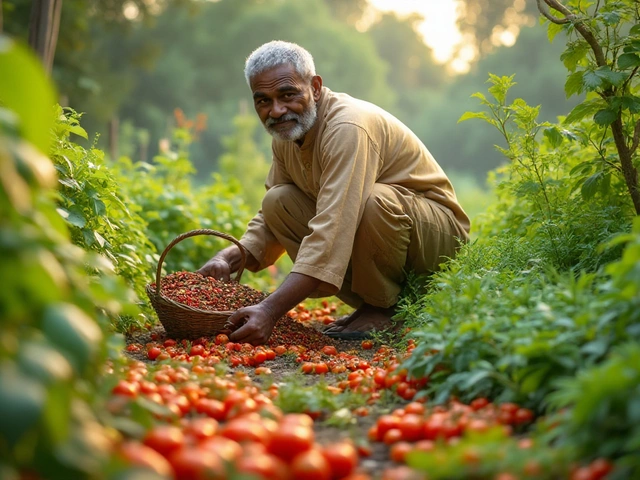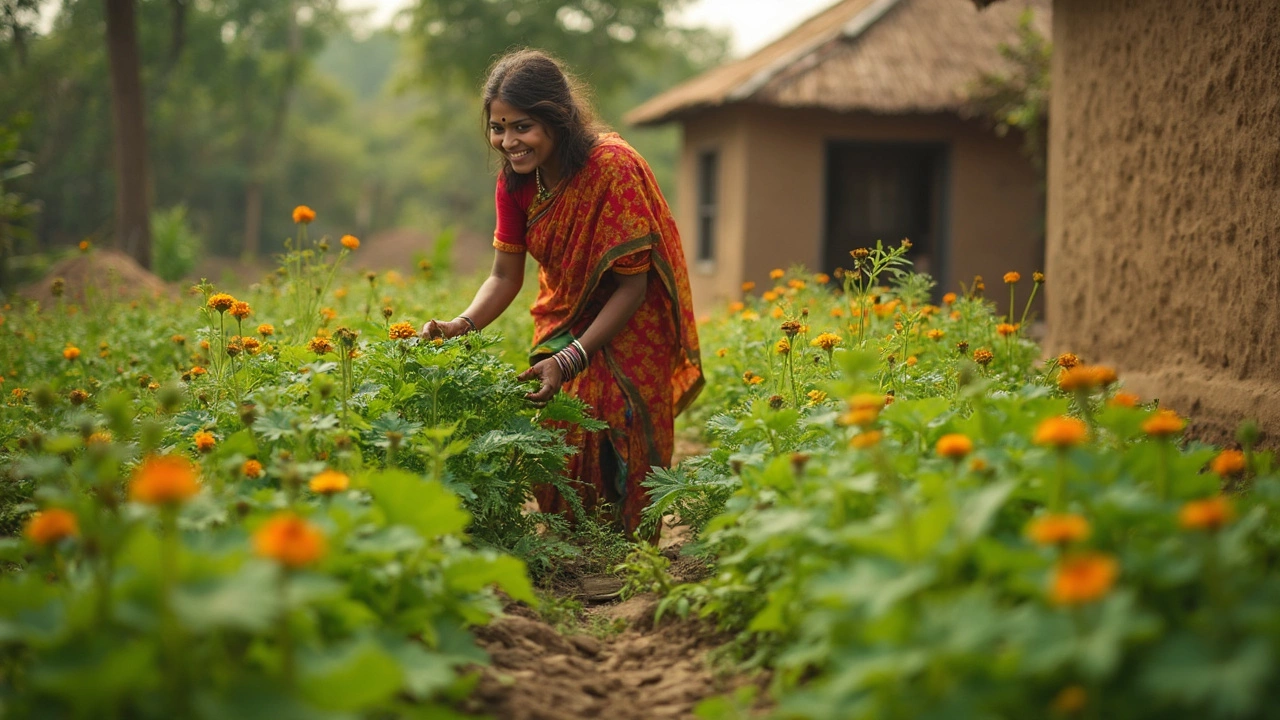Native Indian Vegetables: Your Guide to Growing and Using Local Crops
India is home to a huge variety of veggies that thrive in our climate. From the crunchy bitter gourd to the sweet pumpkin, these plants are easy to grow and pack a lot of nutrition. Below you’ll find simple steps to start a vegetable patch, seasonal reminders, and quick recipe ideas that let you enjoy the harvest right away.
Getting Started: Soil, Sun, and Simple Prep
First thing – pick a spot that gets at least 5‑6 hours of sunlight a day. Most native veggies love warm mornings and a bit of shade in the afternoon. Loosen the soil to about 15 cm deep and mix in 2‑3 kg of well‑rotted compost per square meter. This gives the soil good structure and feeds the plants naturally.
When you plant, space seeds or seedlings according to the label – usually 20‑30 cm apart for leafy greens like spinach and 45‑60 cm for larger vines such as okra. Water gently after planting and keep the soil moist but not soggy. A light mulch of straw or dry leaves helps retain moisture and suppress weeds.
Seasonal Picks and Quick Care Tips
Monsoon (June‑September): This is the best time for fast‑growing veggies like beans, cucumber, and ridge gourd. Use a low‑tech irrigation method like drip lines or even a simple bucket with a few holes to keep water steady.
Winter (October‑February): Cooler weather suits leafy greens, carrots, and peas. Seed them early, protect seedlings with a light net if frost threatens, and keep feeding with a thin compost layer every month.
Summer (March‑May): Heat‑loving crops like bitter gourd, pumpkin, and eggplant shine. Space them well, water early in the morning, and add a layer of compost after each harvest to keep the soil rich.
Watch for common pests – aphids on lettuce, mealybugs on okra. A spray of diluted neem oil or a splash of soapy water can keep them in check without chemicals.
Harvest regularly. Picking greens when they’re young makes the plant produce more leaves, and cutting beans before they harden encourages a second flush.
Once you have fresh produce, keep it simple. Toss chopped cucumbers with lemon juice, salt, and a pinch of chaat masala for a instant snack. Roast pumpkin cubes with a drizzle of oil and a sprinkle of cumin for a side dish that’s ready in 30 minutes.
With these basic steps you can turn any small yard, balcony, or rooftop into a source of tasty, native vegetables. The key is to match the crop to the season, keep the soil alive with compost, and water wisely. Happy planting, and enjoy the flavors of India straight from your garden!
Vegetables Native to India: What Every Gardener Should Know
Curious about which vegetables truly come from India? This article dives into the roots of common vegetables in Indian gardens, highlighting what’s native and what came from elsewhere. Get straight answers with history, practical growing tips, and ways to make the most of native crops. Whether you’re starting a kitchen garden or just want to know your food better, you’ll find something new. There’s more to Indian veggies than meets the eye.
About
Vegetable Gardening
Latest Posts


Which Vegetable Farming is Profitable in India? Your Practical Guide
By Alden Thorne Apr 25, 2025

Best Houseplants for Beginners and Enthusiasts: Top Choices for Every Space
By Alden Thorne Jun 30, 2025

Which Flower Is Most Grown in India? The Top Cultivated Bloom and Why It Dominates
By Alden Thorne Oct 30, 2025

